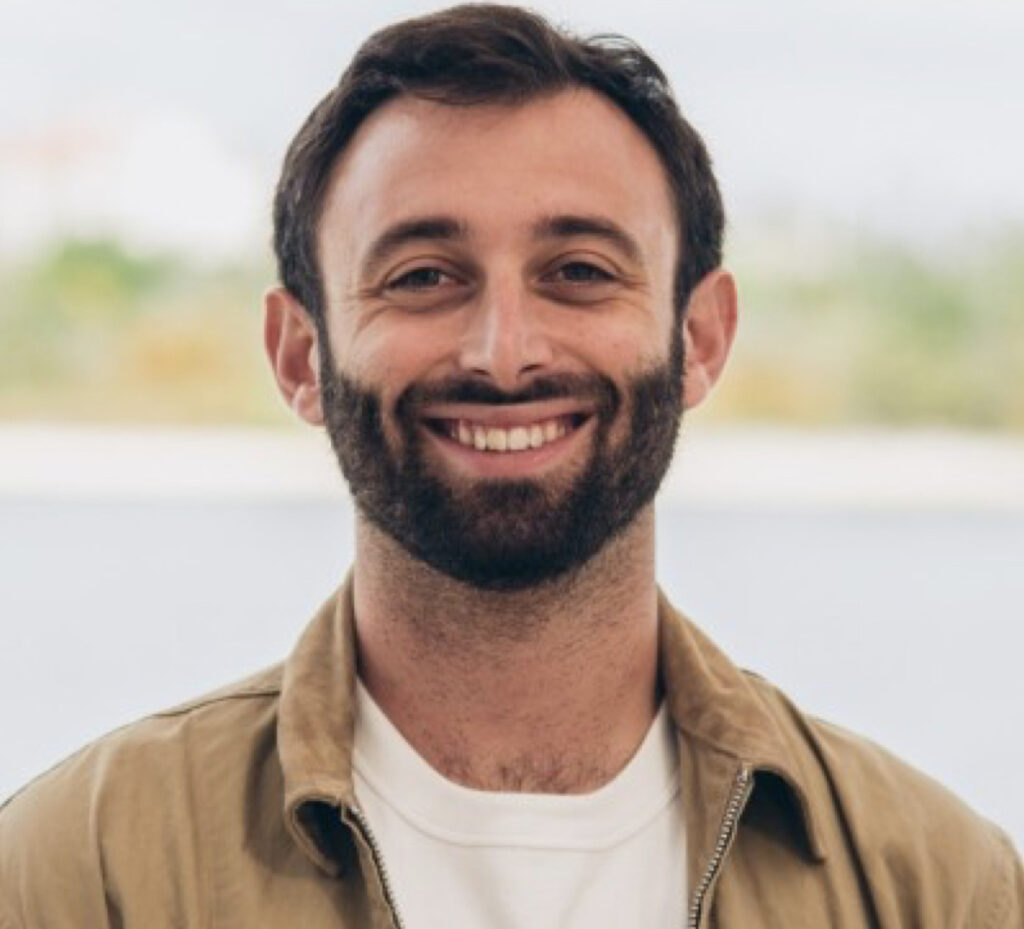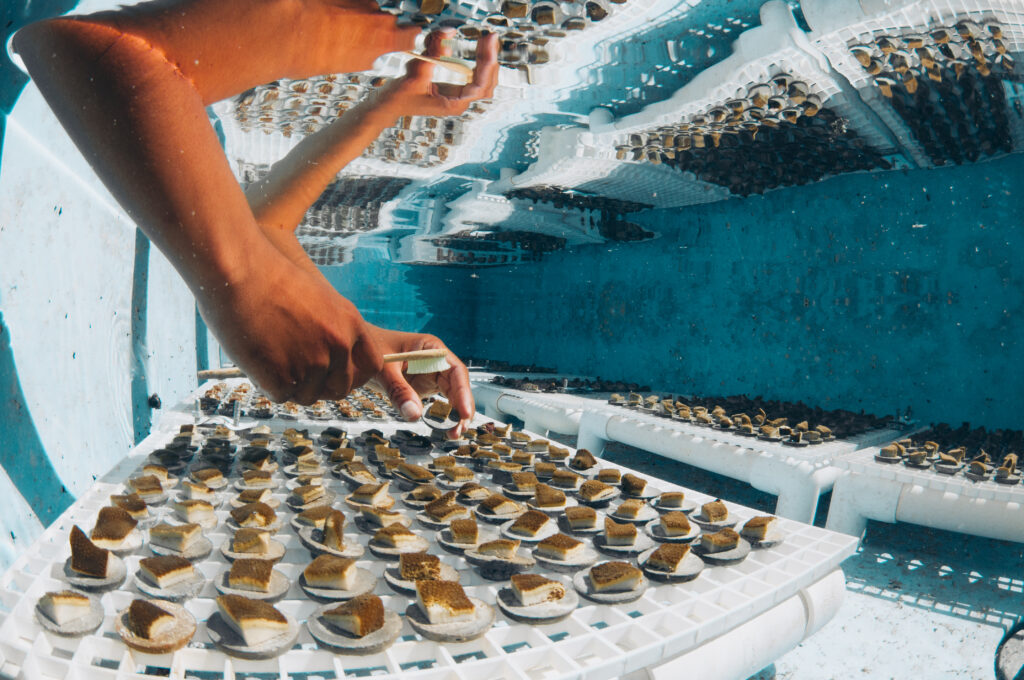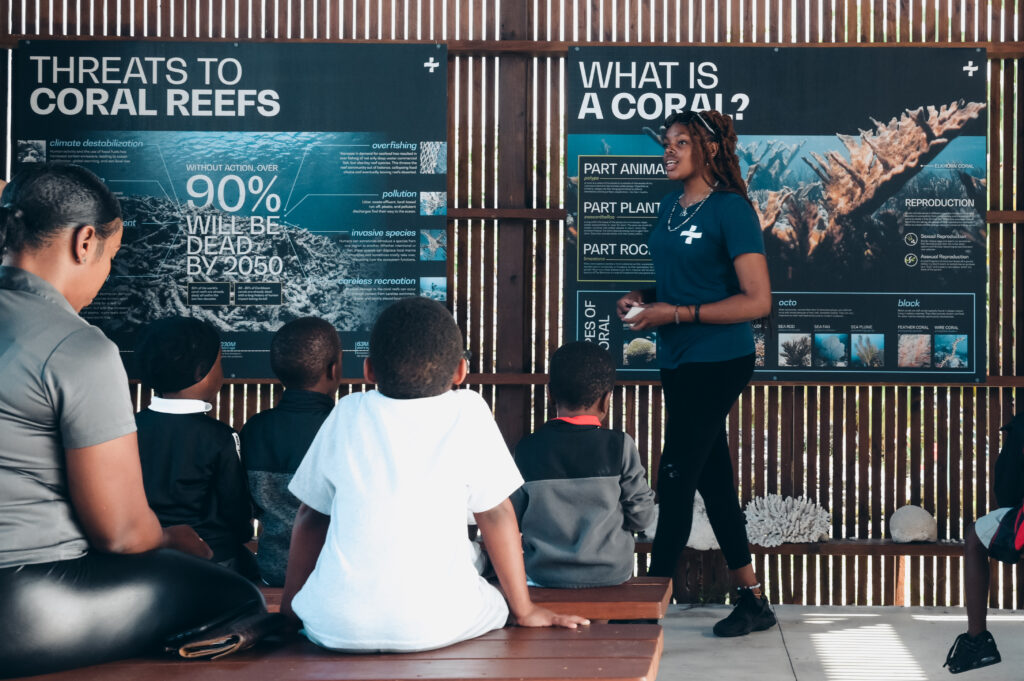By Kristan Reynolds, The Invading Sea
The following Q&A was conducted with Sam Teicher, the co-founder of Coral Vita. The company conducts coral farming in the Bahamas to restore reefs harmed by extreme heat and other threats. This interview has been edited for length and clarity.
What is coral bleaching?

Corals are animals. They’re ancient, distant cousins of jellyfish … They have plants living inside of them, a symbiotic algae, and they make limestone rock for their skeleton. …
Coral bleaching occurs when temperatures typically get too hot for coral to survive. … So the coral, when it gets hot, will kick out the algae (which is their source of color and energy), exposing the white limestone skeleton — which is why we call it bleaching. And if it stays too hot for too long, the corals can suffer mass mortality. …
Scientists will say that a mass coral bleaching event is the equivalent of a 100-year flood — something so powerful it should only happen once a century, and we’ve had multiple bleaching events since the late 1990s… With the current rate of temperature increase driven by the climate crisis, we’re on track to have global coral bleaching events every other year by 2050.
What is coral farming and what goals does your organization hope to achieve through that practice?
Coral farming is a field that’s existed for several decades, where you grow corals to then help restore reefs. The best analogy is, imagine growing trees for reforestation, you’re growing corals for reef restoration. …
While what Coral Vita and all these organizations are committed to doing is incredibly important, what’s even more important is to stop killing coral reefs to begin with. Coral restoration, coral farming is essential, but it’s also not a silver bullet, and we need our leaders in government, in industry, finance and the media to solve for the climate crisis, pollution, overfishing, all these things that are killing coral reefs. …

We need to completely transform how we scale the impact and potential of coral farming for reef restoration so that we can do ecosystem-level projects and keep reefs alive for the future …
What you basically do is you take cuttings from living coral out on the reefs, and then you raise them in a nursery (fragmentation)… Just like taking a cutting off of a tree or a flower that you graft and grow… With the fragmentation process, most projects use underwater coral gardens (coral nurseries in the ocean). … But the primary focus of our work at Coral Vita is actually land-based coral farms. …
We use methods to accelerate the coral growth rates in months and years, instead of decades and centuries. …Then, using underwater cement mixtures or glues, we patch the corals — again, akin to sort of planting trees — we will outplant the corals… and start seeing reef health recover over time, along with marine biodiversity (and) fish populations.
Not only (do they) help with the biodiversity, but also all the important economic and social benefits that reefs provide to humanity — like tourism and fisheries, coastal protection. There’s even medicinal compounds that are found in coral reefs that help do everything to fight cancer and diabetes, to use in the COVID vaccine. …
How does your organization ensure that the corals it farms can adapt to harsh temperatures and increasingly severe weather conditions?
There’s no way we can ever get a guarantee that our corals are going to survive, but we do take a number of steps to mitigate risks. … We control the conditions in our system, and our tanks are not subject to the whims of the ocean. If there is a spike in ocean temperatures, if a fisherman drops their anchor, if there’s a massive storm or dump of pollution, an underwater garden is just really exposed, unfortunately.
With a land-based facility, there’s a number of things that we can do. One of them is we can integrate elements of this greater field of science known as assisted evolution… Corals have a natural ability to adapt to changing conditions — it’s just getting so bad so quickly that they can’t keep up…
We can look at what scientists are projecting temperatures to be off the coast of Florida, or Egypt or Indonesia in 2030 (or) 2060, and we can raise the temperatures in our tanks (and) bring them back down — stress harden the corals — then identify which corals were growing, within each species. … When we raise the temperatures, we not only can potentially help boost the resiliency of all the coral we’re growing, we can then identify which parent colonies are naturally more resilient. …
We also have the ability to use our land-based facility as a coral safe house, so we proactively collected as many large colonies of coral in our Bahamas facility as we could last summer before a massive spike in temperature for a coral bleaching event … we then either return them to the reef or then use them for coral farming. …
What role does education and public awareness play in your organization’s efforts?

Particularly for local communities, a big emphasis within our model is education, workforce development partnerships, but ensuring that the frontline communities where we work benefit the most from the work that we’re doing.
People can come to the farm and have a hands-on marine educational experience…. Being able to walk right up to a coral reef — in a sense — and then learn about why they matter… (and) about what we can do to protect them and restore them. …
In a field dominated by nonprofits and research institutions, Coral Vita operates as a for-profit company: What advantages does this approach offer?
When Gator (Halpern, co-founder of Coral Vita) and I started the company… (we asked) what if we can get developers, insurers, governments, hotels, cruise lines, operators to pay to restore the reefs that they depend on? Because, traditionally, the field has been funded by one-off grants and donations.
Our idea was that we still need nonprofits. We still need researchers. We, as Coral Vita, collaborate with many of them… This is still very much a global team effort. … We were very conscious establishing ourselves as a for profit, because we saw it as a way to unlock critically needed funding to then support ecosystem-scale impact.
Kristan Reynolds is a Florida Atlantic University senior majoring in multimedia journalism and minoring in communication studies who is reporting for The Invading Sea during the summer 2024 semester. Banner image: A Coral Vita diver checks coral growth. (Photo courtesy of Coral Vita)
Sign up for The Invading Sea newsletter by visiting here. If you are interested in submitting an opinion piece to The Invading Sea, email Editor Nathan Crabbe at ncrabbe@fau.edu. To learn more about coral bleaching, watch the video below.



